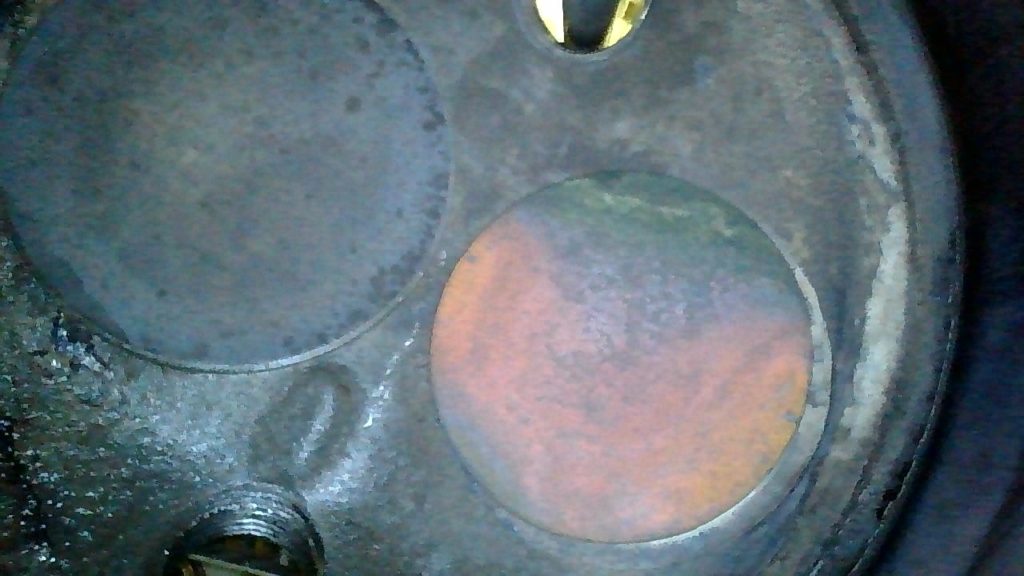Podcast: Play in new window | Download
In this episode, we are talking about two different exhaust valves, both of which showed signs of burning when we looked at them with the borescope.
One valve was in the beginning stages of burning, and the other was too far gone. Scroll down for more info and some photos.
We also talk a bit in this episode about Arthur St. Clair and his P35 Bonanza. I mentioned him in a previous episode, and recently he came back to Classic Aviation so we could borescope his cylinders and exhaust valves. Thankfully, all his valves were in good shape. Here’s a photo from that day:

Now for the two exhaust valves mentioned in the title for this episode…
Here’s a photo of the one that was too far gone, and the cylinder had to be removed and sent out for repair:

Notice the green edge from 11 o’clock to 2 o’clock on the valve… a badly burning area. The valve guide was also very worn, so we sent the cylinder out for repair.
I also cut the old rotocoil apart for this valve and it had a lot of black carbon bits in it, and the internal spring showed the classic flat spot that is many times seen when an exhaust valve has been burning. Here’s the rotocoil:


The other burning exhaust valve on this same engine was only in the beginning stages, and after lapping the valve and installing a new rotocoil and new valve springs, the compression was 72/80 after runup! What a fantastic result! Here’s what that one looked like:

The small area at 12 O’clock on the valve is starting to burn, but it was salvageable by lapping and installing a new rotocoil to ensure proper valve rotation and better sealing capability.
So the moral of the story is, borescope your exhaust valves at regular intervals, like 50 hours, and hopefully you can catch a burning valve before it’s too far gone and has to be removed.
Have a great week everyone!
The post “191 – A Tale of Two Exhaust Valves” appeared first at AirplaneOwnerMaintenance.com


Dean,
You where wondering about the “sequence” of the demise of a burned valve: What fails first, the valve, or the guide? John Schwaner, on page 81 of the Skyranch Engineering Manual, writes: “Most of the heat conducted from the head of the Lycoming exhaust valve goes out through the valve stem into the cylinder head fins.” The guide is in this heat path.
To support this conclusion further, Mike Busch, in his article entitled Exhaust Valve Failures, Part 2: Preventing Failures By Early Detection, states: “We’ve seen that exhaust valve failure is usually caused by accelerated valve guide wear.” He then relates to a personal observation of nickel content in engine oil analysis which was followed by the demise of the corresponding valve in his Cessna 310. The valve guide is the source of the nickel alloy. He presents chronologic evidence in support of his statement.
Thanks for another podcast. Please, keep ’em coming. We want to know how to think like the pros.
Hey Britt, thanks for your thoughts!